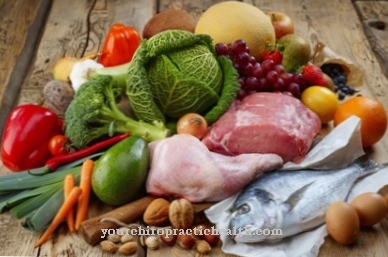Diet tips for people with diabetes: Healthy through the day
A healthy diet is not only an essential factor for successful diabetes therapy, but also for sustainable prevention of obesity. First and foremost, it is important to know what effects the individual foods have on the body and on the blood sugar level. Adhering to a strict eating plan is not absolutely necessary - a balanced and healthy diet is much more important. Even if the times of such rigid plans are long gone, they can still be a useful orientation aid in everyday life.
The most important food components

One reads again and again that a balanced diet makes an essential contribution to health for people with diabetes as well as for non-diabetics. But what exactly is behind the term “balanced” and how should the food be composed? We have summarized it in note form:
- 50-60% of the diet: complex or long-chain carbohydrates (examples: potatoes and wholemeal bread as well as fresh vegetables and fruits)
- 25-30% of the diet: healthy vegetable fats
- 15% of the diet: fish, eggs, lean meat and dairy products as sources of protein
Example of a healthy eating plan to lower blood sugar levels
This nutrition plan is based on a daily calorie intake of up to 2000 Kcal and aims at an optimal blood sugar level in type 1 diabetes as well as balanced blood sugar levels in type 2 diabetes. Slow weight loss, especially recommended for people with type 2 diabetes, can also be achieved by following this plan. The various elements can be combined with one another as you wish.
Energy-rich breakfast for the perfect start to the day
Breakfast is the basis for starting the day refreshed. It is important that all important nutritional components are included in the meal. A combination of fiber, carbohydrates and many vitamins is recommended.
Example of a healthy breakfast:
- 2 whole grain rolls or whole grain bread slices with low-fat sausage, cheese or low-sugar jam
- Whole grain oat flakes with fruit (see picture: oat flakes with blueberries), low-fat milk or yogurt
- Fruit side dishes can consist of apples, blueberries, tangerines, oranges, bananas, grapefruit or kiwis
Balanced lunch as the main meal
It tends to be healthier to eat the main meal at noon so that the body is sufficiently strengthened for the second half of the day. In addition, the food can be digested much better at this time of day than late in the evening. The main meal should be low in fat, high in protein, balanced and rich in vitamins and fiber.
Tip: Let Accu-Chek's rich and tasty diabetes recipes inspire you to compose your main meal for healthy cooking.
Carbohydrates, sources of protein and vegetables for lunch can be:
- 200 g potatoes, whole grain rice or noodles - even better whole wheat noodles
- Fish fillet, beef fillet, poultry breast or baked sheep cheese as a protein-rich vegetarian variant
- 250 g kohlrabi, carrots, leeks, tomatoes, lettuce, spinach, broccoli or beans
Light dinner for a good night's sleep
Even when hunger returns towards evening, it is important not to burden the body unnecessarily with high-fat foods or even fast food. Instead, it is better to use something that is easy to digest, which of course still fills you up in the long term.
Carbohydrates, vegetables and fruits as a combination for a healthy dinner:
- 2 slices of whole-grain bread, pumpernickel or 2 whole-grain rolls with cheese, low-fat sausage or cottage cheese (tip: add chives and cress to stimulate digestion)
- 200 g tomatoes, cucumber, lettuce, beans, asparagus, white cabbage
- Apple, banana, orange or pear for dessert
The following table with healthy alternatives offers tips for a healthy composition of the diet - for example when consciously choosing a spread or side dishes for main meals:

In cooperation with Accu-Chek!


.jpg)














.jpg)



.jpg)

.jpg)




